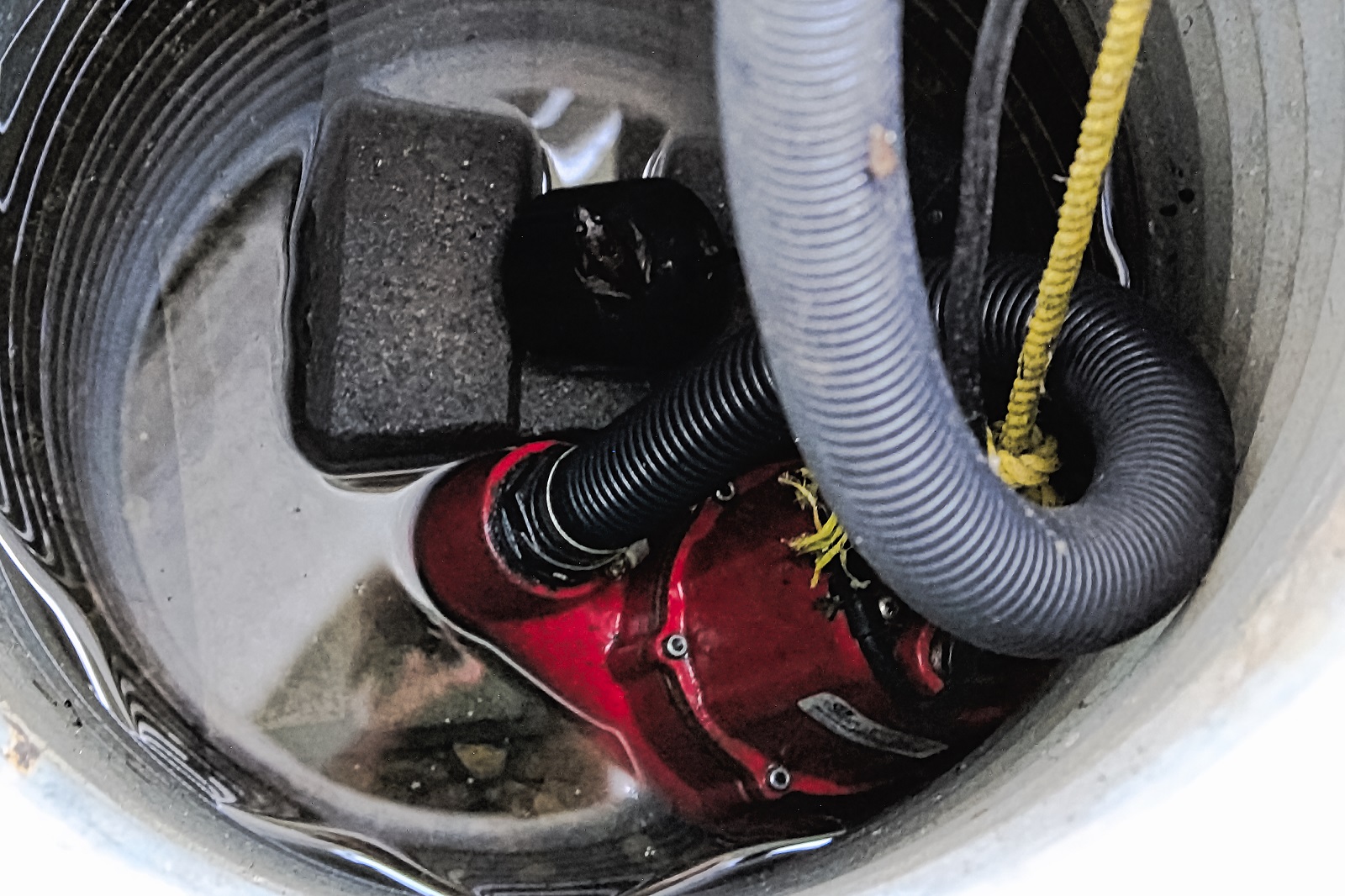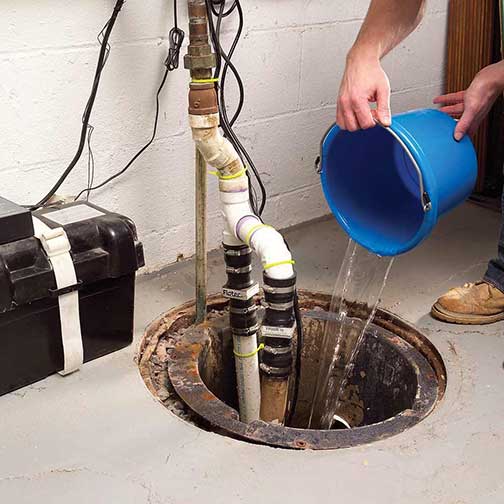Top Techniques for Taking Care of a Sump Pump
Top Techniques for Taking Care of a Sump Pump
Blog Article
Any individual maintains their unique way of thinking involving Cleaning & Maintenance Tips for Your Home's Sump Pump.

Sump pumps are crucial components in lots of homes, particularly in areas susceptible to flooding or excessive moisture. They assist avoid water damage by efficiently removing excess water from basements or crawl spaces. However, like any other appliance, sump pumps need regular maintenance to ensure they function effectively when required the most. Cleansing your sump pump is an important part of its maintenance, and recognizing exactly how to do it correctly can conserve you from expensive repair services and prospective catastrophes.
Introduction
Maintaining a clean sump pump is essential for its appropriate performance and long life. Ignoring this necessary job can lead to obstructions, malfunctions, and eventually, water damages to your building. Consequently, learning just how to clean up a sump pump is essential for house owners who count on these tools to keep their basements completely dry and protected.
Understanding the Sump Pump
Prior to diving right into the cleansing procedure, it's necessary to have a standard understanding of just how a sump pump functions. Commonly set up in a pit or container listed below the cellar flooring, a sump pump contains a number of essential parts, including a pump, a float switch, and a discharge pipe. When water builds up in the pit, the float button triggers the pump, which after that pumps the water out via the discharge pipe, far from the structure's foundation.
Signs of a Dirty Sump Pump
Recognizing when your sump pump requires cleansing is crucial for preventing potential malfunctions. Some typical indications that suggest a dirty sump pump consist of unusual sounds throughout operation, reduced water circulation, and visible debris in the pit. If you notice any one of these symptoms, it's important to cleanse your sump pump immediately to stay clear of any further issues.
Preparing for Cleaning
Before you start cleansing your sump pump, it's essential to take some safety preventative measures. Begin by shutting off the power to the pump to prevent any type of electrical crashes. Additionally, put on proper safety gear, such as handwear covers and goggles, to secure yourself from dirt, particles, and prospective microorganisms.
Detailed Overview to Cleaning Up a Sump Pump
Shutting Off the Power
Begin by disconnecting the power supply to the sump pump to stop any kind of mishaps while cleansing.
Removing Particles and Dirt
Use a pail or an inside story to eliminate any kind of visible particles, dust, or debris from the sump pit. Dispose of the particles effectively to avoid it from clogging the pump or the discharge pipeline.
Cleaning the Pump and Float Switch Over
Once the pit is clear of particles, very carefully eliminate the pump from the pit. Evaluate the pump and the float switch for any kind of indications of damages or wear. Use a soft brush or cloth to clean up the surfaces and eliminate any type of built up crud.
Purging the System
After cleansing the pump and float button, flush the sump pit with tidy water to eliminate any type of continuing to be dust or sediment. This will certainly assist ensure that the pump operates smoothly and successfully.
Looking For Correct Performance
Prior to reinstalling the pump, execute a quick examination to make sure that the float button triggers the pump properly. Pour some water into the sump pit and observe the pump's procedure. If everything is operating properly, you can rebuild the pump and reconnect the power supply.
Upkeep Tips to Keep Your Sump Pump Clean
Along with routine cleansing, there are several upkeep tips you can follow to keep your sump pump in optimum condition:
Conclusion
Cleansing your sump pump is a vital facet of its upkeep and makes certain that it runs efficiently when you require it one of the most. By complying with the steps outlined in this overview and incorporating normal maintenance right into your regimen, you can extend the lifespan of your sump pump and shield your home from water damage.
6 STEPS ON HOW TO CLEAN A SUMP PUMP PROPERLY
UNDERSTANDING SUMP PUMPS
Your sump pump plays a crucial role in protecting your home by managing and removing excess water. It primarily functions as a “shield”, guarding your basement against the damaging effects of water accumulation. The pump is housed in a sump pit in the lowest part of your basement, and its job is to pump out any water that collects there.
During heavy rainfalls or when snow melts rapidly, water can infiltrate your basement, posing potential risks like flooding, structural damage, and harmful mold growth. Here, the sump pump springs into action, pumping out the intruding water and directing it away from your home.
SAFETY FIRST
Before cleaning, remember to prioritize safety. Disconnect the sump pump from the power source to prevent any accidental electric shocks. Also, wear sturdy gloves to protect your hands from any sharp or dirty components within the pump.
REMOVE THE SUMP PUMP
After ensuring your safety, the next step is to remove the sump pump from its pit. Doing this might require careful maneuvering as you don’t want to damage any pump components. Once removed, clean the sump pit to remove any accumulated debris or sludge.
INSPECT THE PUMP
Inspect the pump for any visible signs of wear or damage. Check the power cord, float switch, and impeller housing. If any components look worn out or damaged, consider replacing them to ensure optimal performance.
CLEAN THE PUMP
Thoroughly clean the pump with warm, soapy water. Make sure to rid it of any dirt, gravel, or other debris that might impede its performance. You can use a toothbrush to clean the small, hard-to-reach parts of the pump.
REINSTALL THE SUMP PUMP
Reinstall the pump into the sump pit Make sure it’s positioned correctly to remove the water effectively Once it’s back in place, reconnect it to the power source TEST THE PUMP
Finally, pour some water into the pit to ensure the pump works correctly. It should start automatically and begin pumping out the water; if it doesn’t, check the power source and the positioning of the pump.
Remember, while cleaning your sump pump is an essential part of home maintenance, hiring a professional plumber for a thorough inspection and cleaning at least once a year is also important. This will ensure that your pump is in optimal condition, ready to protect your home from potential water damage.
BEST PRACTICES FOR CLEANING SUMP PUMP DISCHARGE PIPES
Regular Inspection: Regularly inspect your discharge pipes, especially during heavy rainfall or snowmelt periods. Look for any signs of blockage or damage. Early detection of problems can prevent serious issues down the line. Periodic Cleaning: Over time, sediment and debris can accumulate in the discharge pipes, impeding the flow of water. Regular cleaning helps keep the pipes clear and functioning efficiently. You can use a high-pressure water jet to effectively clean the pipes. Insulation During Winter: In colder climates, discharge pipes can freeze, blocking the outflow of water. Protect your discharge pipes from freezing temperatures by insulating them with foam pipe insulation. This will ensure the sump pump can continue to discharge water even in freezing conditions. Proper Positioning: The discharge pipe should be positioned to direct water away from your home’s foundation. Improper positioning can lead to water seeping back into the basement. Ensure the pipe is long enough and angled correctly. Installation of a Check Valve: A check valve prevents water from flowing back into your sump pit after the pump has pushed it out. Installing a check valve helps maintain the efficiency of your sump pump and reduces the risk of flooding. Minimize Pipe Turns: Every curve or turn in the discharge pipe can decrease the efficiency of water flow. By minimizing turns and bends in your discharge pipe, you can increase the efficiency of your sump pump. https://www.fullspeedplumbing.com/how-to-clean-a-sump-pump-properly9999/

We were brought to that article about Steps to Cleaning Your Sump Pump Properly from a good friend on another website. Feel free to take a moment to distribute this write-up if you enjoyed reading it. We love reading our article about .
Appointment Report this page